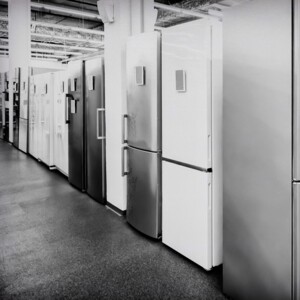The greater the outer surface and the temperature differences between the ambient and storage temperatures, the greater the heat input. Good insulation is therefore essential for cryogenic storage. One possibility is to increase the wall thickness, but above a certain point this hardly brings any improvement in percentage terms and also limits the storage volume. Combinations of PU foam and integrated vacuum panels can help, resulting in low wall thicknesses with high insulation values. The outer surface is significantly influenced by the geometry. Therefore, it makes sense to keep the ratio of volume to surface as small as possible. The quotient of the outer surface to the storage volume, which is referred to as the specific surface, is used as a reference value. To illustrate, consider multiple, individual refrigerators versus one large storage room. As a rule, larger machines are more efficient than small ones. But even if many refrigerators are operated in the same way compared to a storage room, they differ significantly in terms of energy consumption, because the individual refrigerators have a significantly larger specific surface area than the storage room. This can account for a factor of 10 in energy consumption.

















